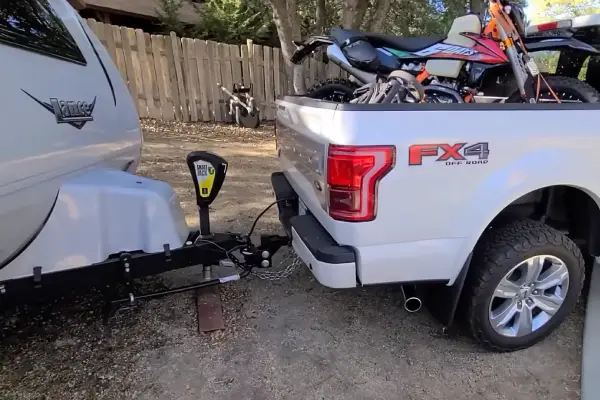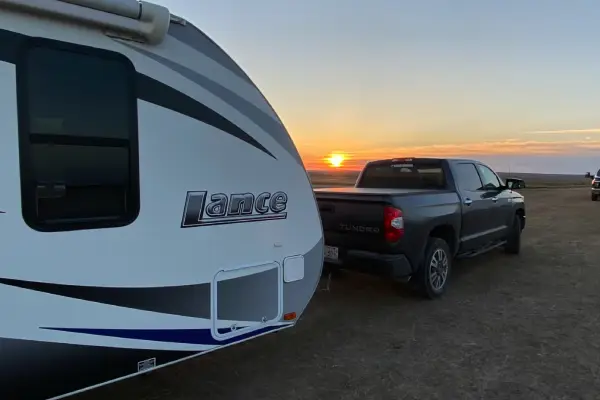A truck’s capability is a major consideration before towing any vehicle or trailer. You need to understand two essential factors: payload capacity and towing capacity. These two capacities are often confused with each other, but they serve different purposes.
Payload refers to the weight a truck can carry within its confines, including passengers and cargo, while towing capacity refers to the load a truck can safely pull with a trailer. Understanding the differences between vehicle payload and towing capacity is vital for safely and efficiently using your truck.
As part of this article, we will explore truck payload and towing capacity, the calculation methods, and the influence of aftermarket components. By the end of this article, you’ll understand the significant variations between these two capacities and how they relate to your truck.
Differences Between Truck Payload and Towing Capacity

There are several key points to consider when considering the differences between towing capacity & truck payload.
- Definition
- Calculation methods
- Trim configuration impact
- Tongue weight consideration
- Terrain influence
- Weight distribution focus
- Influence of aftermarket components
1. Definition
Payload capacity includes the weight of passengers, cargo, and any additional accessories or modifications. It’s like the weight you carry on your back, supported by the truck’s suspension system.
On the other hand, vehicle towing capacity tells you how many pounds of weight a truck can tow safely using a trailer. The weight is mainly supported by the trailer’s axles, with the truck providing the necessary power and stability. It’s akin to pulling a load behind you.
2. Calculation Methods
Calculating the differences between towing capacity and truck payload involves understanding the distinct calculation methods for each.
To determine its payload capacity, determine the truck’s curb weight and Gross Vehicle Weight Rating (GVWR). Now subtract the curb load from the GVWR to calculate the payload capacity.
For example, if the truck has a GVWR of 7,000 pounds and a curb weight of 5,000 pounds, the payload capacity is 2,000.
Conversely, towing capacity is determined by considering the Gross Combined Vehicle Weight Rating (GCVWR) and the truck’s and occupants’ weight. To calculate the towing capacity, subtract the truck’s weight and occupants from the GCVWR.
For instance, if the GCVWR is 15,000 pounds and the truck and occupants weigh 8,000 pounds, the towing capacity would be 7,000 pounds.
3. Trim Configuration Impact
The trim level of your tow truck can significantly affect its towing capabilities. Higher trim levels often come with more options and features, which can increase the vehicle’s overall weight. This added weight can reduce the payload capacity, as there’s less room for additional cargo.
On the other hand, lower trim levels may have fewer options and features, resulting in a lighter vehicle and higher payload capacity. When selecting a truck trim level, strike a balance between towing capacity and payload capacity.
4. Tongue Weight Consideration
Tongue weight is a significant consideration that falls under the umbrella of payload. It refers to the weight transferred onto the vehicle’s hitch and can greatly affect the overall load on the truck.
While the axle weight of the trailer determines towing capacity, tongue weight emphasizes the importance of the trailer’s weight distribution. Properly distributing the weight can ensure better stability and control during heavy duty towing.
5. Terrain Influence
Different terrains can affect the handling and stability of a truck with varying payloads. Understanding how payload impacts the vehicle’s dynamics is crucial, especially when navigating challenging landscapes.
Towing capacity is influenced by the type of terrain as well. Still, the trailer’s weight distribution and the truck’s ability to handle the load become the primary focus, emphasizing the importance of proper hitching and braking systems.
6. Weight Distribution Focus
Regarding payload, the focus is on achieving a balanced weight distribution within the truck bed. An unevenly distributed payload can lead to issues such as sagging or instability during turns, which can affect the vehicle’s overall handling and stability.
Conversely, towing capacity primarily focuses on the weight distribution of the trailer. Ensuring the trailer is balanced is crucial to prevent problems like swaying or fishtailing. Hitch setup and trailer loading play critical roles in maintaining a balanced distribution.
7. Influence of Aftermarket Components
Regarding payload, modifications to the truck bed can affect the weight it can carry. For example, adding a heavy-duty toolbox or a bed liner can reduce the available payload capacity. These additions must be considered when determining how much weight the truck can safely handle.
Similarly, aftermarket components can also influence towing capacity. Upgrades such as trailer hitches or suspension enhancements can affect the truck’s ability to tow heavy loads.
The added weight of these components can reduce the overall towing capacity, requiring adjustments to ensure that the truck remains within its limits.
Can I increase my truck towing capacity with a tow package?

All vehicles have a specified towing capacity, and exceeding that level would require major modifications. However, smaller modifications can be made by installing a tow package to increase the towing capacity, which simply helps distribute the weight of your load more evenly.
- The heavy-duty hitch is designed to handle the increased weight and stress of towing, providing a secure connection between your truck and trailer.
- The wiring harness allows proper communication between your truck and trailer, ensuring all lights and signals work correctly.
- The transmission cooler helps prevent gearbox overheating by keeping the fluid at an optimal temperature.
Understanding Payload and Towing Capacity to Choose the Right Truck
Understanding the difference between payload and vehicle towing capacity is essential when selecting a truck that suits your needs. Payload capacity indicates the maximum weight a truck can transport within its confines, while towing capacity is the maximum weight a tow truck can securely haul with a trailer.
The towing process also considers trim configuration, terrain influence, weight distribution, and aftermarket components. Although a tow package can enhance your truck’s towing capacity, it’s still limited by the manufacturer’s specified maximum towing capacity.So, according to your needs, a heavy-duty towing service like Santa Clara Towing provides vehicles with stronger engines and larger towing capacities for heavier loads. They can provide 24/7 towing service with these vehicles. Moreover, they offer roadside assistance to ensure your towing experience is hassle-free.
